It’s frustrating, isn’t it? You invest in sleek stainless steel faucets, only to see water spots, limescale, or dullness creep in. Maybe you’ve already searched how to clean stainless steel faucet, only to be overwhelmed by contradictory advice.
I get it. After researching what truly works, I know how confusing it is when one guide says use undiluted vinegar and another says dilute it. My goal is to clear that up with a simple, effective guide that shows you what to do, when, and why.
You want real solutions to keep your stainless steel faucets looking their best—and I’m here to help. Let’s dive in and make them shine for years to come.
Table of Content
- Understanding Your Stainless Steel Faucet: More Than Just Shine
- The Go-To Cleaning Arsenal: What Most Experts Recommend
- The Golden Rules: Gentle Care is Key
- What NOT to Do When You Clean Stainless Steel Faucet
- The Vinegar Dilemma: Undiluted vs. Diluted – Let’s Clear This Up!
- Your Comprehensive Cleaning Guide: Step-by-Step Solutions
- Beyond Basic Cleaning: Troubleshooting and Long-Term Care
- Natural vs. Commercial Cleaners: Making an Informed Choice
- Keeping Your Stainless Steel Faucet Sparkling
- Thinking of Replacing Your Stainless Steel Faucet?
- FAQs
Understanding Your Stainless Steel Faucet: More Than Just Shine
Before you clean your stainless steel faucet, it’s useful to know a bit about stainless steel. It’s durable and resists corrosion, but it’s not problem-free. Water spots, fingerprints, and limescale can dull its shine. The good news? With the right approach, you can easily fix these issues and keep your faucet looking like new.
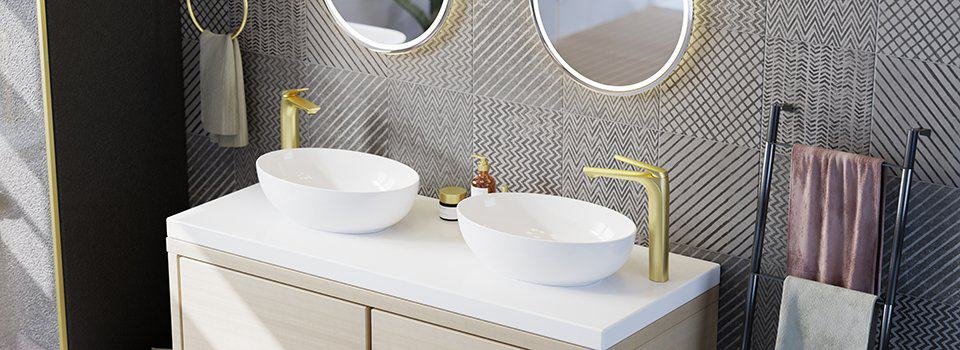
The Go-To Cleaning Arsenal: What Most Experts Recommend
- White Vinegar: A star at removing hard water stains and mineral buildup. Its acetic acid reacts with calcium carbonate (limescale), breaking it down so you can wipe it away with ease.
- Baking Soda: A gentle abrasive. Mixed with water into a paste, it scrubs away grime without scratching. Its tiny crystals lift dirt while being safe for stainless steel—and it helps absorb odors too.
- Lemon Juice: Like vinegar, its citric acid dissolves buildup and leaves a fresh scent.
- Mild Soap and Water: Perfect for daily upkeep to clean stainless steel faucet surfaces without damaging the finish.

The Golden Rules: Gentle Care is Key
Across the board, experts emphasize a few critical principles to protect your stainless steel faucet’s finish:
- Always Use Soft Tools: Microfiber cloths are your best friend for cleaning and drying. For tight spots or stubborn buildup, a soft-bristled toothbrush works great.
- Say NO to Abrasives: Avoid steel wool, harsh scrubbers, scouring powders, or coarse cloths—they can scratch and dull your faucet’s finish.
- Dry, Dry, Dry! After you clean your stainless steel faucet, dry your faucet thoroughly with a soft cloth. This simple step prevents water spots and mineral buildup—even plain water can leave marks if left to air-dry.
- Clean with the Grain: Stainless steel has a subtle “grain”—fine lines running horizontally or vertically. Always wipe in the same direction to avoid pushing dirt deeper or scratching the surface.

What NOT to Do When You Clean Stainless Steel Faucet
Just as important as knowing what to use is knowing what to avoid. These substances can cause serious damage to your stainless steel faucet:
- Harsh Chemicals: Steer clear of industrial-grade cleaners, bleach-based products, and anything containing chlorine, ammonia, or strong acids like hydrofluoric, hydrochloric, or phosphoric acids. These can corrode or tarnish the finish.
- Oven Cleaners: Definitely keep these away from your faucet, as they can scratch surfaces.
- Leaving Wet Items on the Faucet: Don’t let wet rags, sponges, or cloths dry on your stainless steel surface. This can dull its shine and potentially lead to water marks.
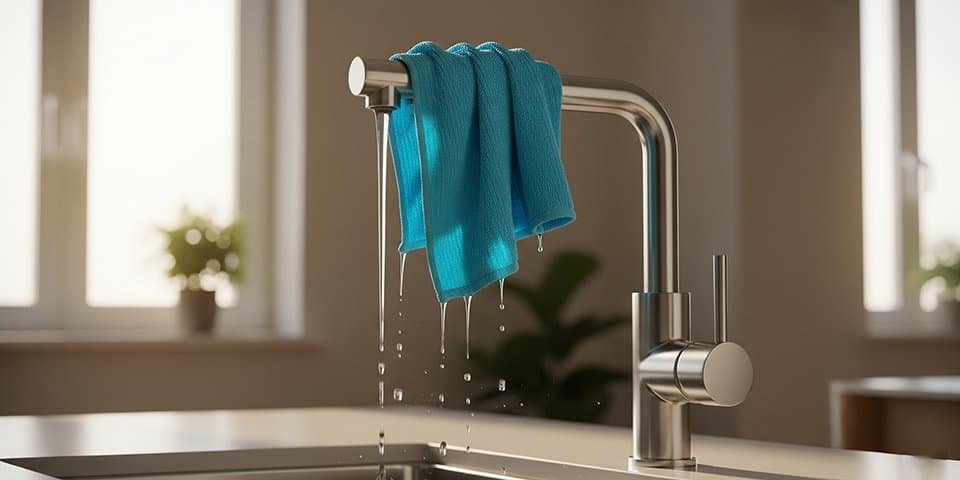
The Vinegar Dilemma: Undiluted vs. Diluted – Let’s Clear This Up!
This is where things can get confusing—some sources recommend using undiluted vinegar, while others suggest a 50/50 mix to avoid damaging your faucet.
Here’s my take:
- For Routine Cleaning: Use a 50/50 vinegar and water mix. It’s safer for regular use and protects your faucet’s finish while effectively preventing water spots and light buildup.
- For Tough Stains: Use undiluted vinegar for heavy limescale, but with caution. Apply it directly, let it sit for about 5 minutes, then rinse thoroughly. Always test in a hidden spot first if you’re unsure about the finish.
- Safety First: Vinegar contains acetic acid, which can irritate eyes and lungs. Use in a well-ventilated area and be extra careful around kids, the elderly, or those with health issues.
By knowing when and how to use vinegar, you can clean effectively without damaging your faucet.
Your Comprehensive Cleaning Guide: Step-by-Step Solutions
Let’s break down how to tackle common issues and keep your faucet gleaming.
For Everyday Shine and Fingerprints:
- Damp Cloth Wipe-Down: Use a soft microfiber cloth dampened with warm water and a bit of mild dish soap.
- Wipe with the Grain: Gently clean the faucet, following the direction of the stainless steel grain.
- Rinse Thoroughly: Rinse with clean water to remove all soap residue.
- Dry Immediately: Use a dry microfiber cloth to wipe it completely dry—this helps prevent water spots and keeps the shine.
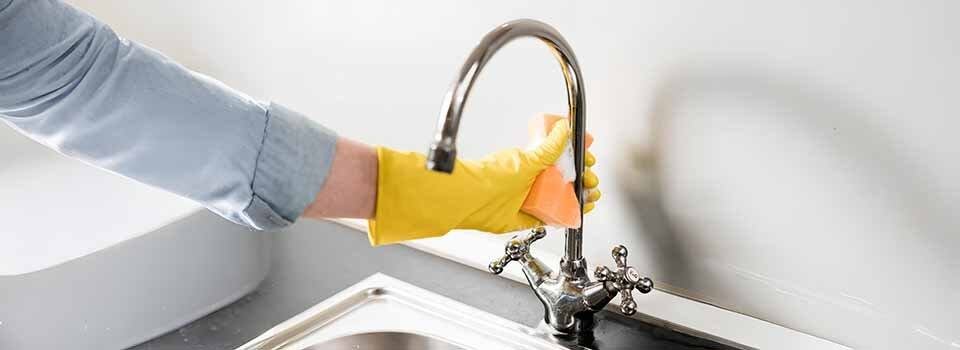
For Hard Water Stains and Limescale Buildup:
- Prepare Your Solution: Mix equal parts white vinegar and water in a spray bottle for general stains. For tough buildup, use undiluted vinegar (with proper precautions).
- Apply and Dwell: Spray directly on stains. For stubborn spots, soak a cotton ball or paper towel in vinegar and let it sit on the area for 5–15 minutes.
- Gentle Scrub: Use a soft toothbrush or microfiber cloth to gently scrub the area.
- Rinse and Dry: Rinse well with clean water, then dry immediately with a soft cloth.

For Light Scouring and Odor Removal (Baking Soda Paste):
- Make a Paste: Mix baking soda with just enough water to create a creamy paste.
- Apply and Scrub: Apply the paste to your faucet using a microfiber cloth or a soft-bristled toothbrush. Gently rub it onto the surface.
- Rinse and Dry: Rinse thoroughly to remove all baking soda residue, then dry immediately with a clean cloth.
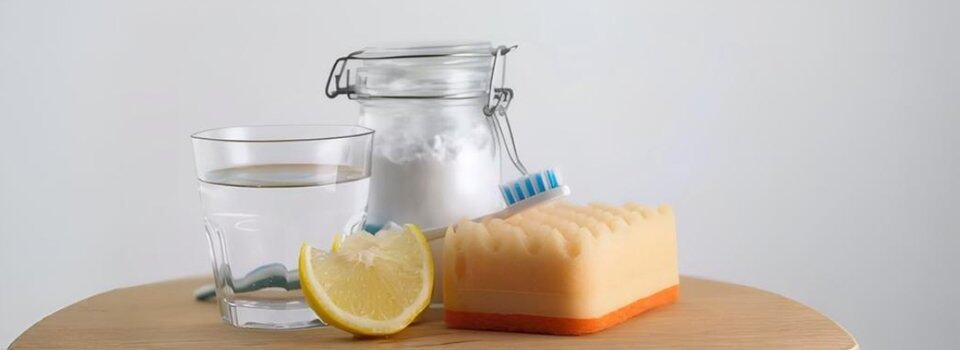
Beyond Basic Cleaning: Troubleshooting and Long-Term Care
Your faucet is an investment, and keeping it in top shape goes beyond just cleaning its surface.
Troubleshooting Common Faucet Issues
| Problem | Likely Cause | Specific Solution | Prevention Tip |
|---|---|---|---|
| Dull Finish/Lack of Luster | Water spots, Residue buildup, Lack of buffing | Buff with clean microfiber, Apply stainless steel polish/wax | Routine cleaning, Regular buffing |
| Minor Rust Spots | External iron particles (e.g., steel wool residue), High iron content in water | Baking soda paste, Oxalic acid-based cleaner (use with caution), Rust remover for stainless steel | Avoid steel wool, Rinse thoroughly after cleaning, Use filtered water |
| Sticky Residue/Grease Buildup | Food residue, Oils, General grime | Mild dish soap and warm water, Diluted degreaser, Baking soda paste | Immediate wipe-downs after cooking/use |
| Reduced Water Flow | Clogged aerator due to mineral buildup | Disassemble and soak aerator in vinegar solution | Periodic aerator cleaning (e.g., every 3-6 months) |
| Minor Scratches | Abrasive cleaning, Accidental impact | Specialized stainless steel scratch repair kits (with caveats), Professional help for deep scratches | Avoid abrasive materials, Handle with care, Use soft cloths |
Essential Maintenance Tips for Longevity
- Regular Inspection: Check your faucet regularly for leaks, loose parts, or wear. Catching problems early helps prevent bigger issues.
- Clean the Aerator: Mineral buildup can clog the aerator and reduce water flow. Remove it now and then, and soak it in a vinegar-water mix. (You’ll find helpful how-to videos on YouTube».)
- Mind Your Water Quality: Hard water causes more stains. A water softener can reduce buildup, extend faucet life, and improve water quality.
- Protect the Finish: For matte finishes, apply a polish or wax to keep it looking even and reduce fingerprints.
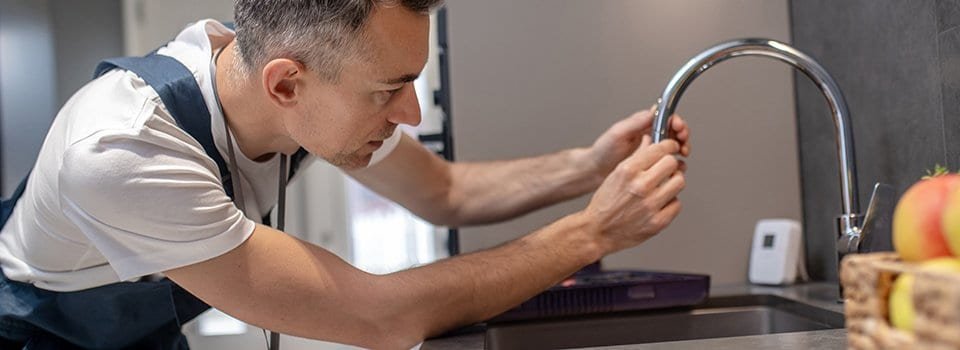
Natural vs. Commercial Cleaners: Making an Informed Choice
Natural cleaners like vinegar and baking soda are popular because they’re effective, affordable, and safe for your home and the environment. You may also find commercial stainless steel cleaners, such as Simple Green or Branch Basics, praised for being gentle and eco-friendly.
Here’s my take:
- Natural Cleaners (Vinegar, Baking Soda, Lemon, Mild Soap): My top choice for daily cleaning and tough stains. They’re cost-effective, easy to find, and non-toxic—great if you want eco-friendly solutions.
- Commercial Cleaners: If you want convenience or need extra power for stubborn issues, look for stainless steel cleaners that are non-abrasive, non-toxic, and free from harsh chemicals like bleach or ammonia. Some also add a protective layer against fingerprints and spots. Always follow the label instructions.
Ultimately, the best choice depends on your preferences, the cleaning task, and your comfort with different products. If you have sensitive skin or children, natural options are safer. If you’re short on time and face tough smudges, a quality commercial polish can be a great help.
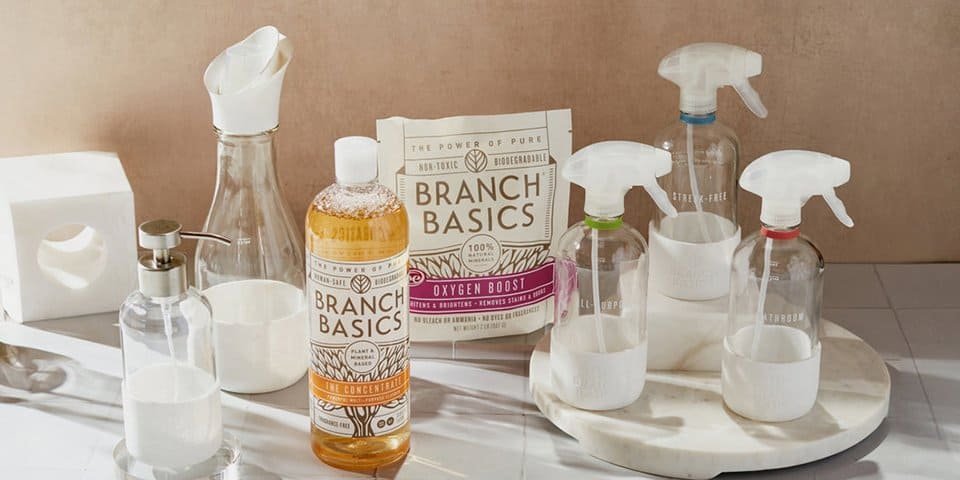
(via.Branch Basics»)
Keeping Your Stainless Steel Faucet Sparkling
Keeping your stainless steel faucet looking great isn’t hard. By using gentle care, knowing what to use and avoid, and cleaning and drying regularly, you’ll keep it shining. Whether you prefer natural cleaners like vinegar and baking soda or commercial products, regular maintenance is the key to lasting brilliance.
Thinking of Replacing Your Stainless Steel Faucet?
If your current faucet is beyond cleaning or you’re ready for an upgrade, consider switching to a high-quality stainless steel faucet from Lanerdi. Known for durability, style, and affordability, Lanerdi faucets are built to last and easy to maintain — a smart choice for any kitchen or bathroom renovation.

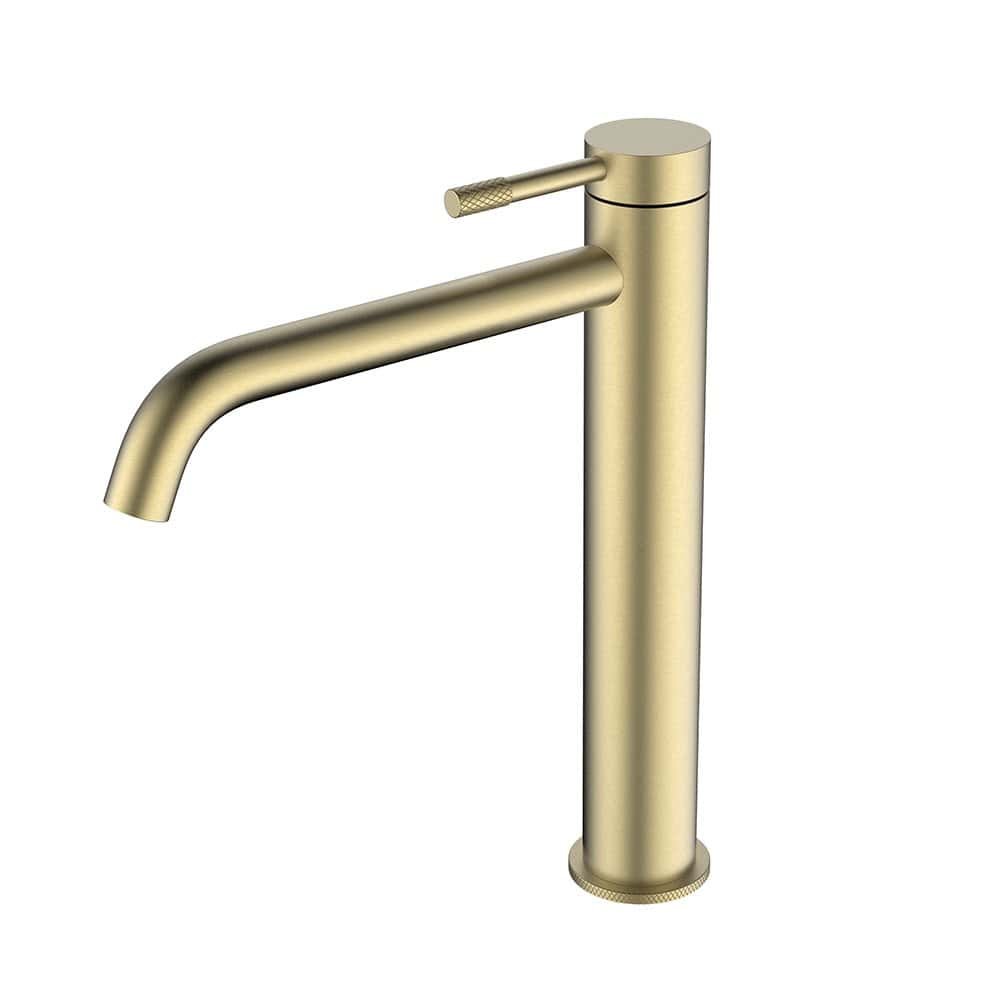

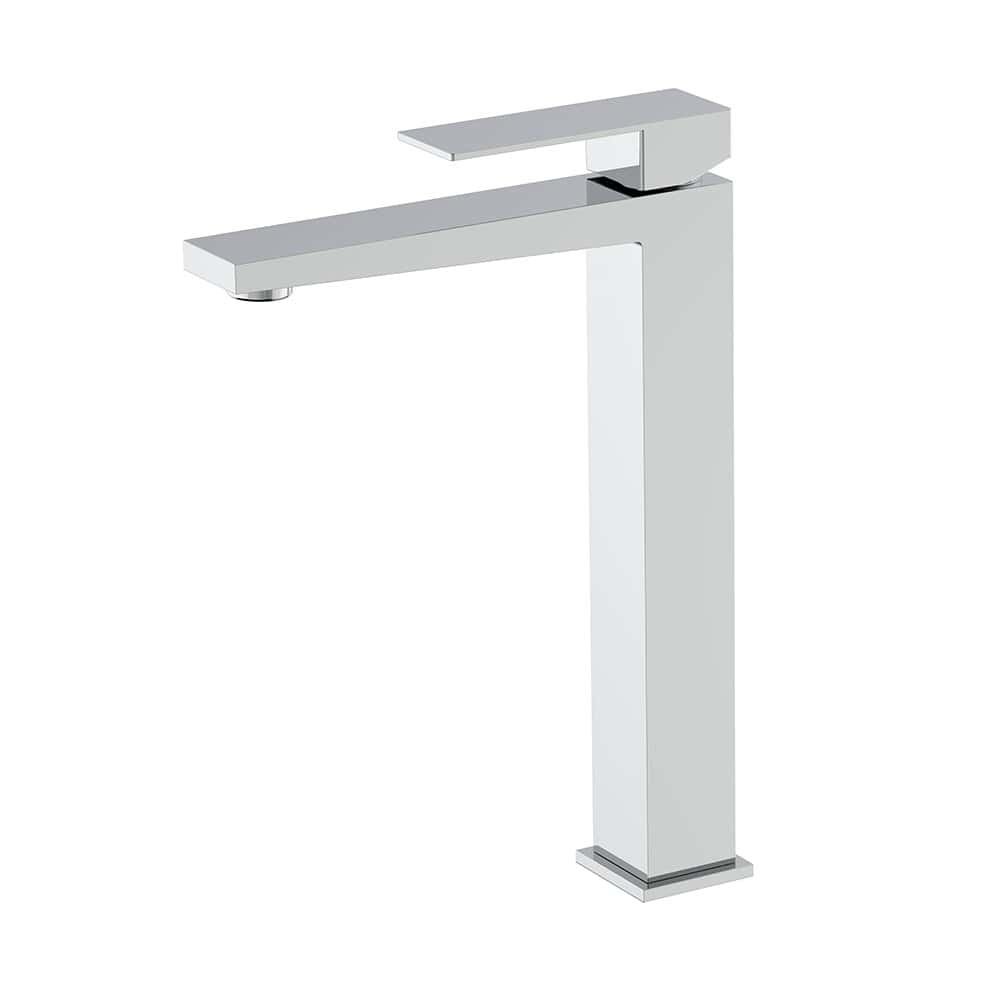
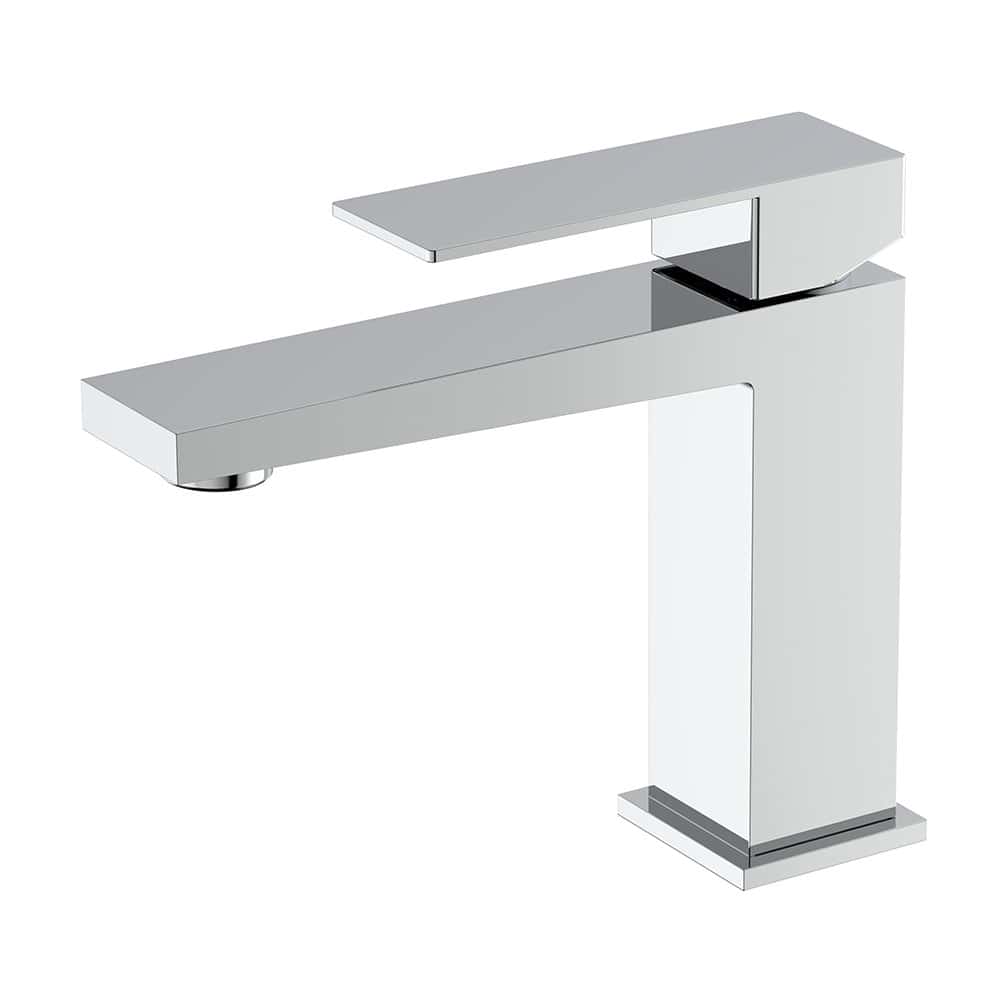

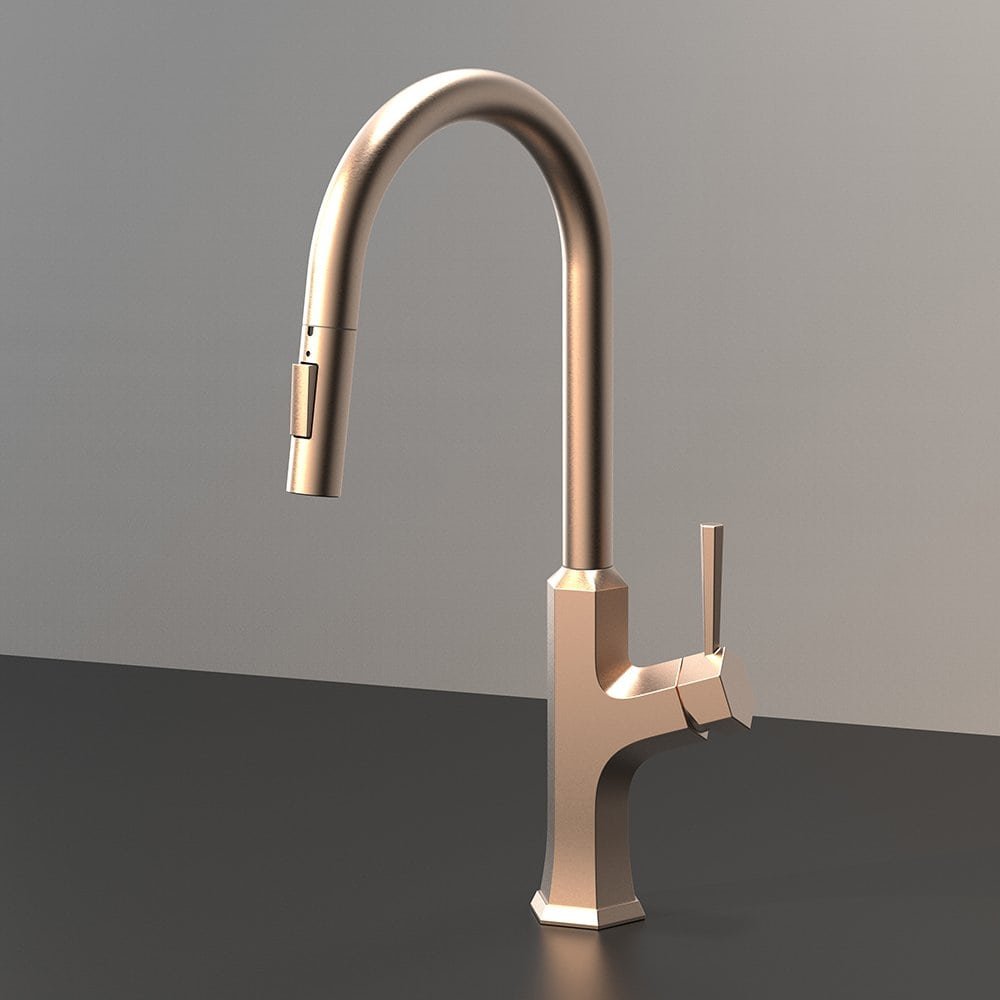
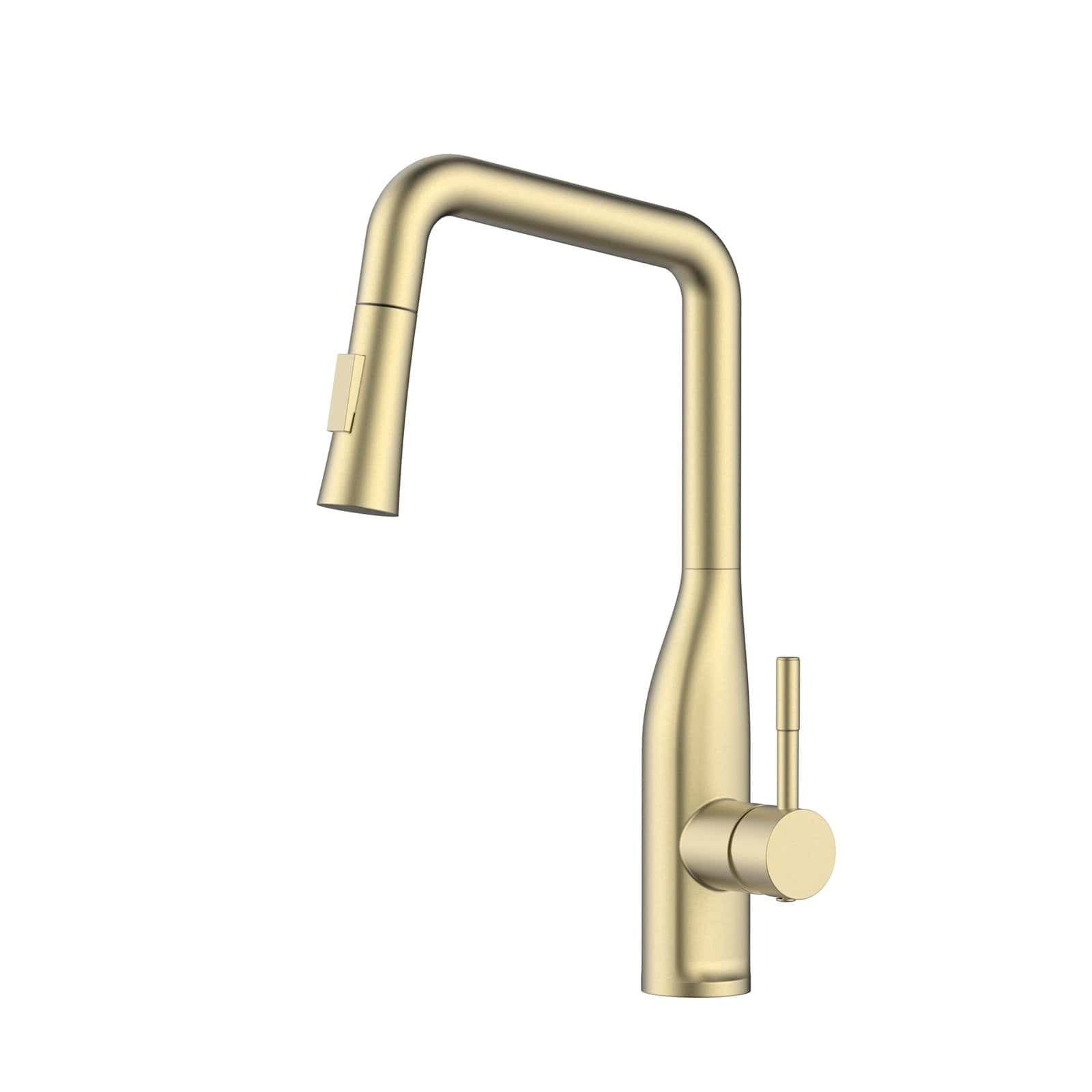
.jpg)